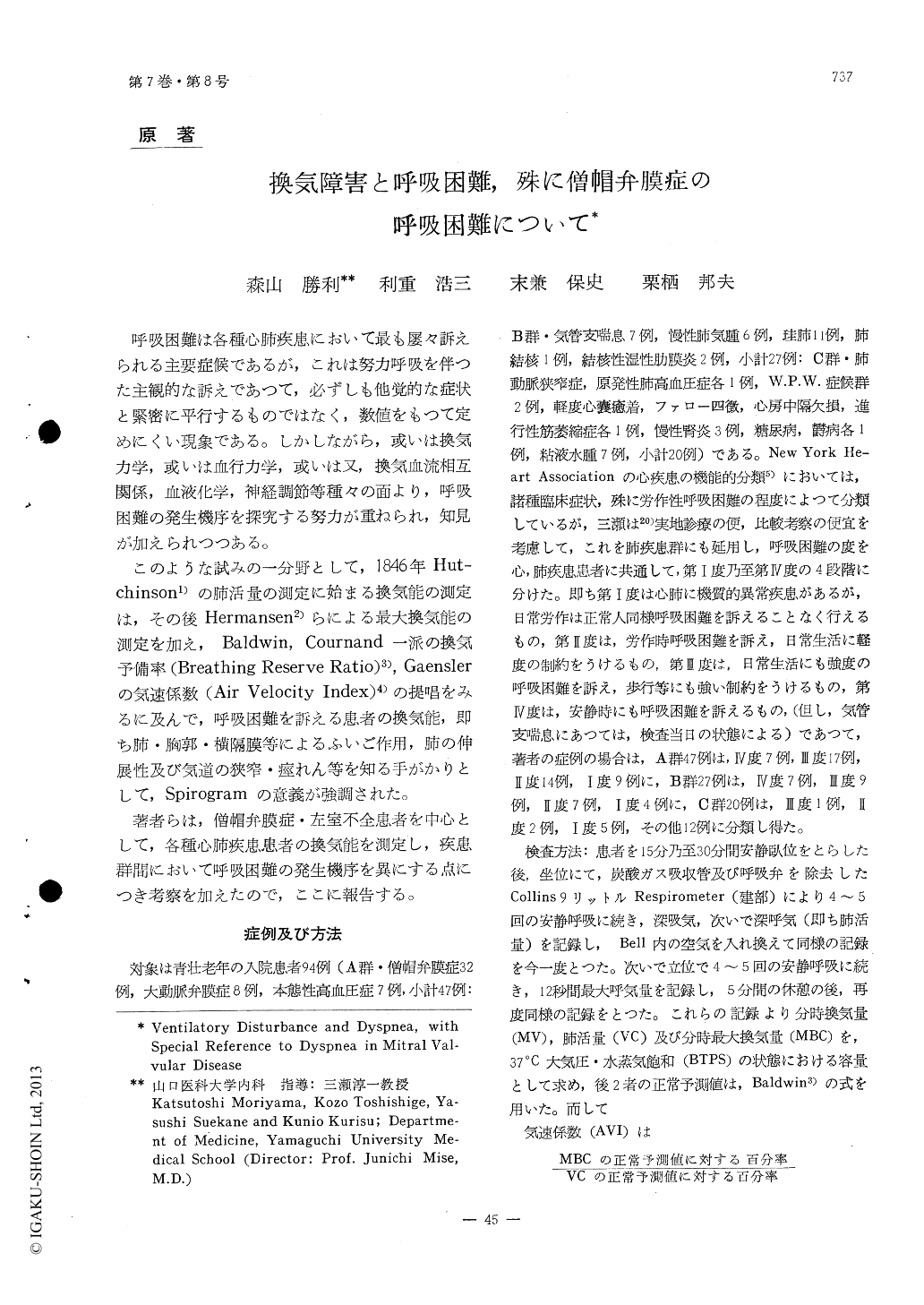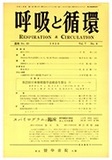Japanese
English
- 有料閲覧
- Abstract 文献概要
- 1ページ目 Look Inside
呼吸困難は各種心肺疾患において最も屡々訴えられる主要症候であるが,これは努力呼吸を伴つた主観的な訴えであつて,必ずしも他覚的な症状と緊密に平行するものではなく,数値をもつて定めにくい現象である。しかしながら,或いは換気力学,或いは血行力学,或いは又,換気血流相互関係,血液化学,神経調節等種々の面より,呼吸困難の発生機序を探究する努力が重ねられ,知見が加えられつつある。
このような試みの一分野として,1846年Hut—chinson1)の肺活量の測定に始まる換気能の測定は,その後Hermansen2)らによる最大換気能の測定を加え,Baldwin, Cournand一派の換気予備率(Breathing Reserve Ratio)3),Gaenslerの気速係数(Air Velocity Index)4)の提唱をみるに及んで,呼吸困難を訴える患者の換気能,即ち肺・胸郭・横隔膜等によるふいご作用,肺の伸展性及び気道の狭窄・痙れん等を知る手がかりとして,Spirogramの意義が強調された。
In 47 patients with mitral valvular disease or left ventricular failure (Group A), 27 patients with pulmonary diseases (Group B) and 20 patients with other diseases, pulmonary function tests were made with Benedict-Roth type respirometer.
The dyspnea threshold in breathing reserve ratio was within the range of 85 to 75 per cent in Group A, 70 to 60 per cent in Group B. Considering the degree of decrease in vital capacity and functional classification of patients, the difference of dyspnea threshold between Group A and B, suggests that the main cause of dyspnea in Group B is the increase in ventilatory resistance, and in Group A, easy fatiguability of respiratory muscle, increase in respiratory stimulus and of sensitivity of respiratory center seem to be important factors of dyspnea.

Copyright © 1959, Igaku-Shoin Ltd. All rights reserved.


